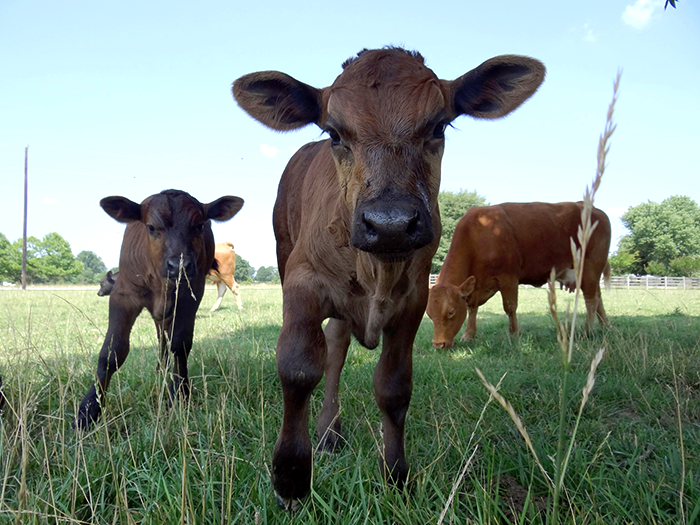Over twenty years ago, somatic cell nuclear transfer (SCNT) let scientists successfully clone the first mammal—Dolly the sheep. Despite advances since then, the efficiency of this process remains low. In the July issue of G3, Srirattana and St. John report a method to deplete cattle donor cells of mitochondrial DNA and efficiently generate blastocysts from these depleted donors.
In SCNT, a nucleus taken from a mature, differentiated somatic donor cell is placed into an oocyte whose nucleus has been removed. Together, this newly created cell goes on to form an embryo whose nuclear genome is identical to the donor cell’s. The low efficiency of SCNT is thought to be partially due to incomplete epigenetic reprogramming of the new embryo. In fact, treatment of embryos with the histone deacetylase inhibitor trichostatin A (TSA) is widely used to enhance SCNT in mouse.
Nuclear DNA isn’t the only genetic information in the cell, though. Mitochondria house a distinct genome that is maternally inherited, and mitochondrial DNA (mtDNA) from donor cells can be randomly transmitted from the donor cell to the embryo. The mixing of mtDNA from the two initial cells complicates the process of SCNT.
Normally, an organism inherits its mtDNA from its mother, but SCNT embryos have two different sets of mtDNA—donor cell and oocyte—to deal with, and the interplay between the two can cause genomic instability, aneuploidy, poor embryo quality and implantation rates, and metabolic defects.
To combat this problem, Srirattana and St. John depleted the mtDNA from cattle donor cells by using 2’,3’-dideoxycytidine (ddC), which inhibits the mtDNA-specific DNA polymerase gamma but doesn’t affect nuclear DNA. They compared embryos made from mtDNA-depleted cells to nondepleted cells, and they looked at the effect of TSA treatment on both depleted and nondepleted cells.
They found that mtDNA-depleted donor cells can generate viable blastocysts that contain only oocyte mtDNA—as is the case in blastocysts formed by sperm fertilization. Donors depleted of mtDNA had a lower rate of blastocyst generation than nondepleted cells, but the use of TSA brought the blastocyst rate back to that of nondepleted donors. Srirattana and St. John also showed that gene expression differed between blastocysts created from depleted and nondepleted cells; they found that differentially expressed genes were largely involved in embryonic development, suggesting the use of mtDNA-depleted donor cells can alter development of the cloned embryos.
This work demonstrates that depleting mtDNA from donor cells is an effective tool for creating SCNT embryos with mitochondrial genomes inherited only from the oocyte. Such embryos will hopefully avoid some of the problems created by mixing incompatible mitochondrial genomes and may one day make SCNT easier and more efficient for cattle scientists and others who rely on this cloning technique.
CITATION:
Manipulating the Mitochondrial Genome To Enhance Cattle Embryo Development
Kanokwan Srirattana, Justin C. St. John
G3: Genes, Genomes, Genetics July 2017 7: 2065-2080;
https://doi.org/10.1534/g3.117.042655
http://www.g3journal.org/content/7/7/2065













